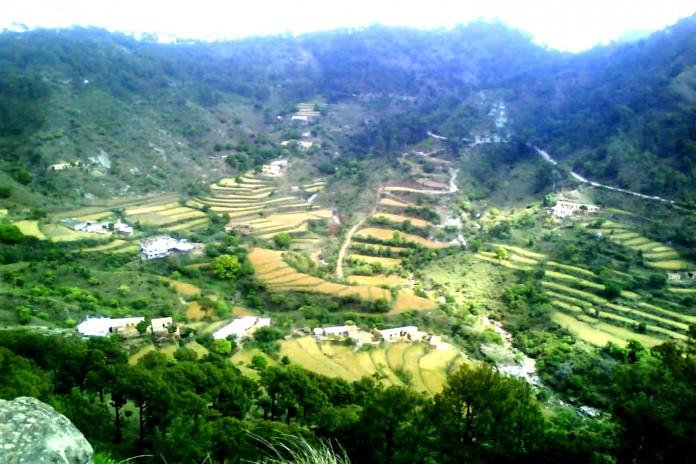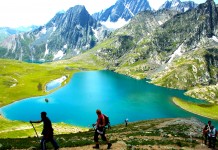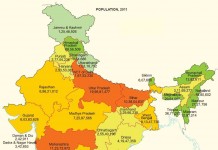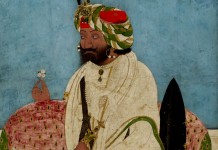Bhimbar is a small town situated in the plains, on the right bank of a stream of the same name, which flows into the Chenab near Wazirabad. It is about 29 miles north of Gujrat, 22 miles east of Jhelum, and 50 miles north-west of Sialkot.
The place is of some importance, as being the point of departure from the plains for Kashmir ; it is distant about 150 miles from Srinagar, by the Pir Panjal or Pantsal route.
The town, which is mostly built of stone, is surrounded on all except the south side by a low hill, about 500 or 600 feet in height. There is an old Mughul Sarai in the middle of the town, and a brick garhi or fort of no strength on the north ; the former building is used as the thanah and the district officer’s residence. To the south of the town are two buildings for the reception of travellers. There is also a good encamping ground supplied with water from the nadi. This stream is usually shallow and fordable, but is liable to freshets.
Bhimbar was anciently governed by an independent Raja; the last of the line, Sultan Khan, opposed Ranjit Singh’s designs upon Kashmir, and is stated to have been blinded by Raja Gulab Singh who, in his early career, was an employee of Sultan Khan.
The ruins of the Palace of the old Rajas of Bhimbar may be traced near the village, on the left of the road towards Kashmir.
References
Sufi,G.M.D (1996). Kashmir Under The Mughals. Kashir: Being A History Of Kashmir(p.250) Delhi:Capital Publishing House.

















